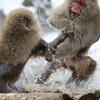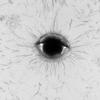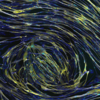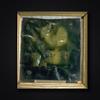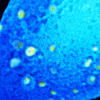You are here
Science in Focus
09.24.2019, by
Discover the 20 photos that won the La preuve par l’image (The Proof is in the picture) competition. The competition, which was organised this year by the CNRS and the francophone association for knowledge (ACFAS), rewards images from research projects across all scientific fields. The jury prize and the public’s “favourite” prize will be awarded during the CNRS Forum, to be held from 25-27 October in Paris.
More information on the competition and winning photos is available at:www.concours-preuve-image.fr.
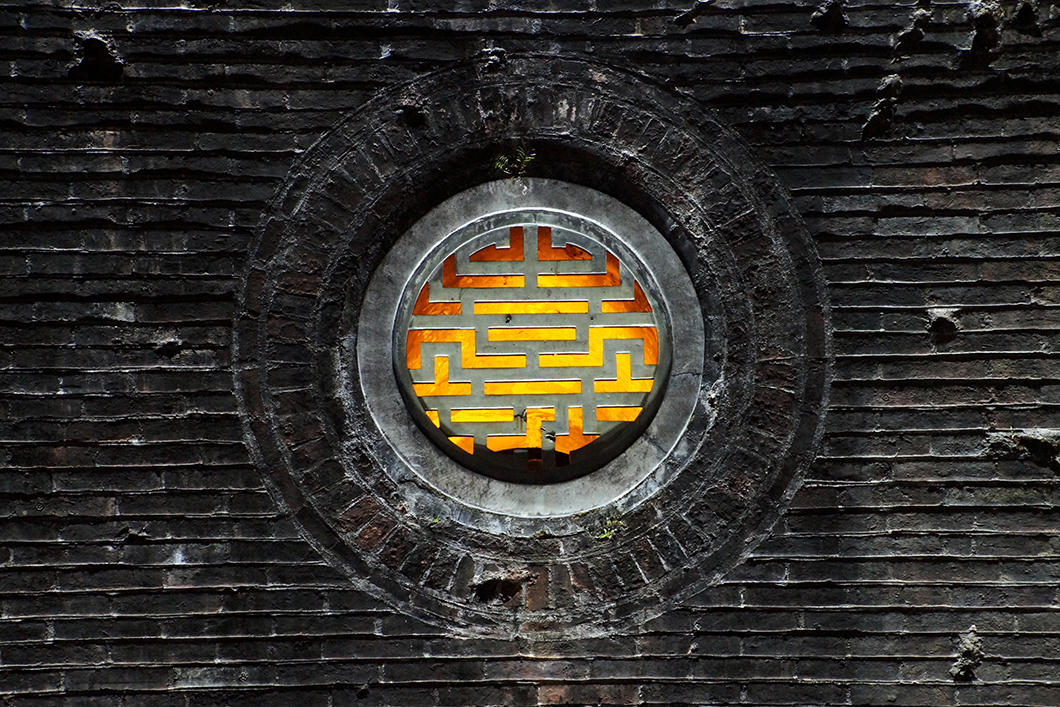
1
Slideshow mode
In 1968, the Tet Offensive marked a decisive turning point in the Vietnam War. The most symbolic battle took place in Huế, the former imperial capital and the epicentre of the battle. Here is a detail from the south gate of the citadel, a fortress dating back two centuries, built in the image of the Forbidden City in Beijing. The marks still visible on the rocks surrounding this window bear witness to the difficulties that the Marines encountered in recapturing the bastion. Today a UNESCO World Heritage site, the citadel remains a site of pilgrimage for American and Vietnamese veterans a half century after the offensive.
Estelle Senna / IAO (Sciences Po Lyon / Université Lumière Lyon 2 / CNRS / ENS Lyon), 2018
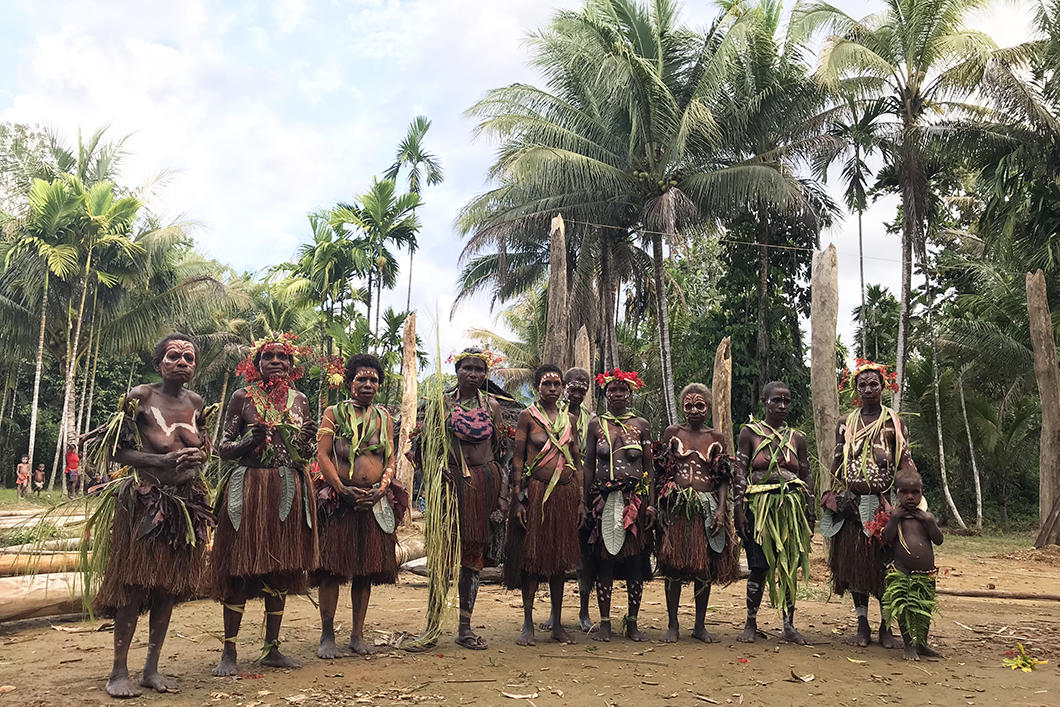
2
Slideshow mode
Women from Awin village in Papua New Guinea posing for a photo after a traditional dance known as a sing-sing. This is how they wanted to say goodbye, in ceremonial dress and finery, to the academic team before its departure. This research project, at the intersection of anthropology and genetics, recognizes the exceptional cultural evolution and biological distinctiveness of these parts of the world, which have remained isolated for over 50,000 years.
François-Xavier Ricaut - CNRS / Papuan past project, 2018
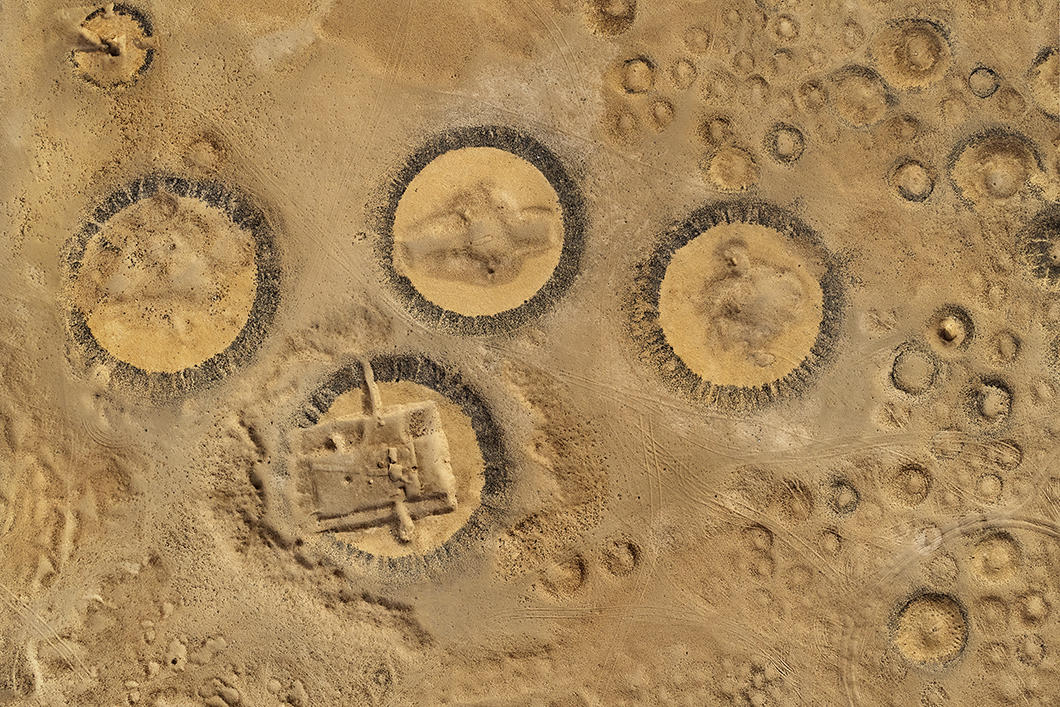
3
Slideshow mode
Between Egypt and Sub-Saharan Africa, the large Kerma necropolis on Saï Island in Sudan includes thousands of tombs, some of which most likely belonged to the princes charged with defending the kingdom’s northern borders. Seen here from an altitude of 150 metres, the tumuli stand out from the sand, and are ringed with black stones and covered with white pebbles. Some tombs, which are remarkably conserved, measure nearly 40 metres in diameter. This jewel of the desert, dating back thousands of years, shows that the landscape itself can help reveal history.
Thomas Nicq / HALMA (CNRS / Ministère de la culture / Université de Lille), 2016
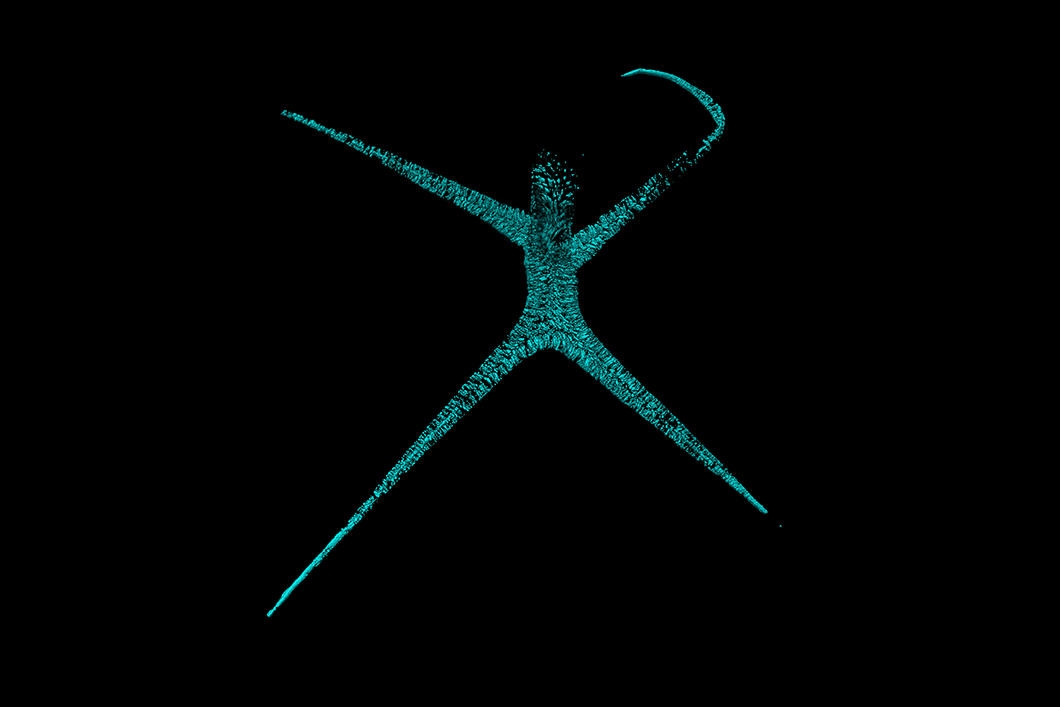
4
Slideshow mode
Behold the trichome, a tiny unicellular hair belonging to the thale cress, a small common plant. Sticking out from the surface of its leaves, these trichomes form a pilous shield against bio-aggressors. The plant increases the resistance of its leaves by secreting callose, seen in blue in the image, which settles along the length of the trichome inside the cell, making it less delicate and producing toxic compounds in that area. It proudly fights off any attackers, such as microbes or insects!
Elodie Noirot / DImaCell / CNRS / INRA
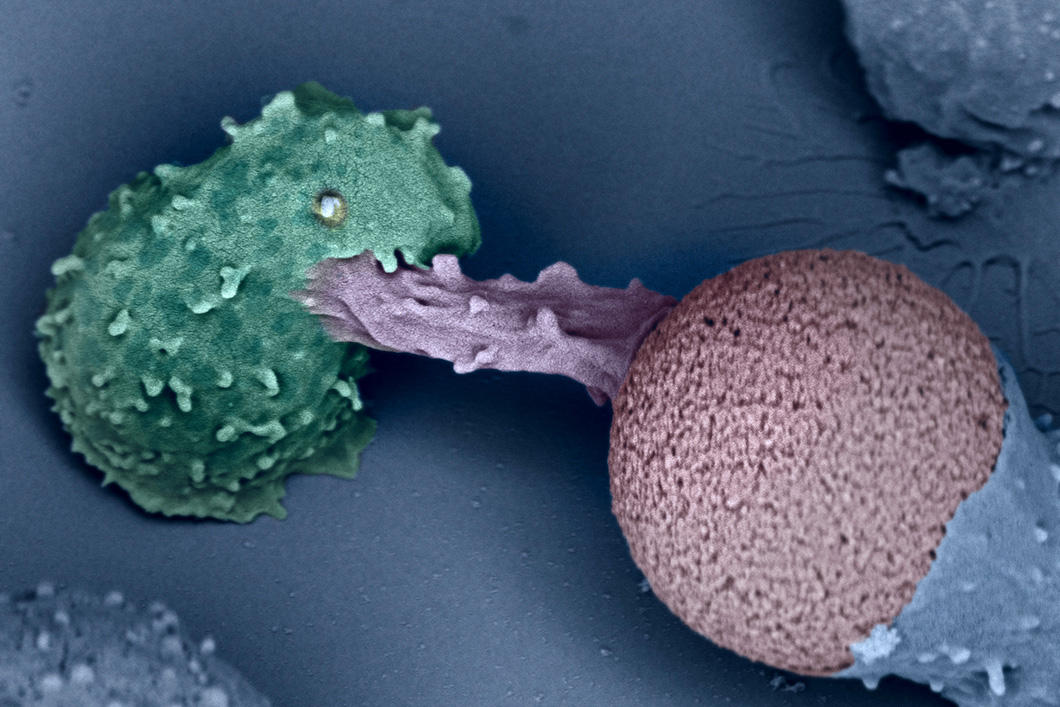
5
Slideshow mode
As soldiers of adaptive immunity, white blood cells form a crucial line of defence for our organisms. One of these sentries, an auxiliary T lymphocyte (T-cell), is pictured at left in the process of recognizing an intruder: it is using its trunk to feel around the surface of a plastic microbead covered in antibodies. In our organisms, it is other types of white blood cells that point the way for T cells—through the use of beads and antibodies—notably by presenting them with guidance molecules indicating the presence of an aggressor. Once identified, T cells organize the immune response in order to neutralize it wherever it may be in the body. Understanding the mechanisms at work in these recognition reactions between cells is essential in prompting white blood cells to better detect, identify, and combat foreign bodies.
Virginie Bazin IPBS / Université Pierre et Marie Curie, Claire Hivroz, Julien Husson / CNRS / Ecole polytechnique / Inserm / Institut Curie, 2016
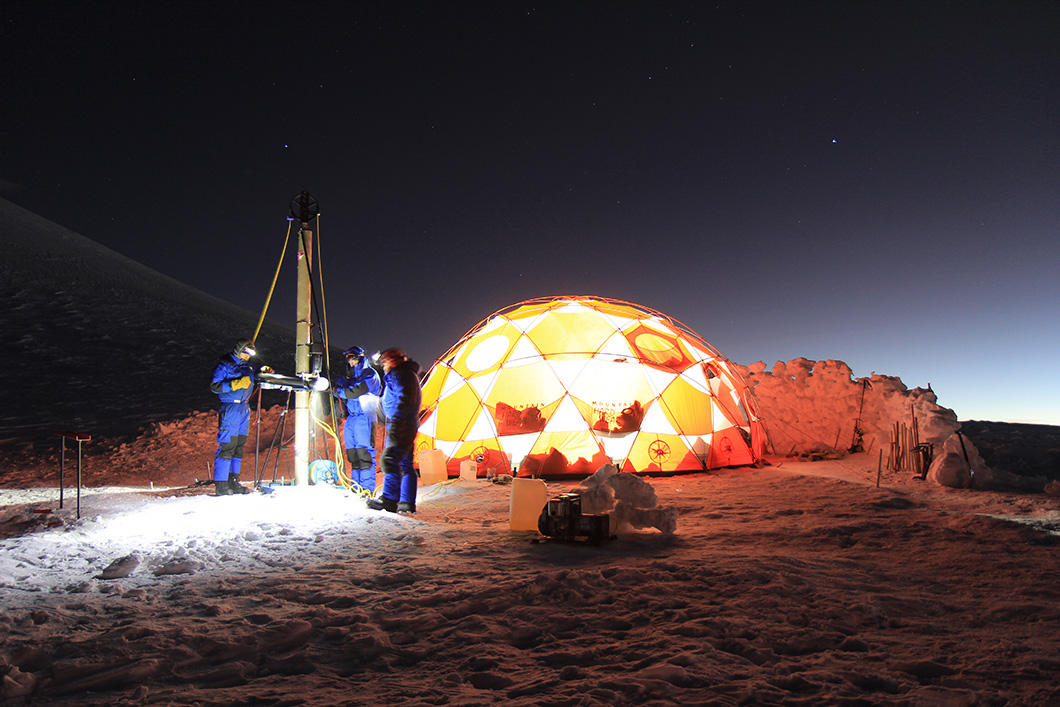
6
Slideshow mode
Perched at an altitude of over 6,300 metres, these researchers are preparing to extract an ice core from Illimani Mountain in Bolivia. The assignment is drawing to a close after two weeks of expedition in extreme conditions. In this open-air laboratory, time is running out to collect the dust, bacteria, and other gases trapped in the ice before it melts. The study of these ice cores will help retrace the memory of the atmosphere across 18,000 years.
Bruno Jourdain / UGA / CNRS, 2017
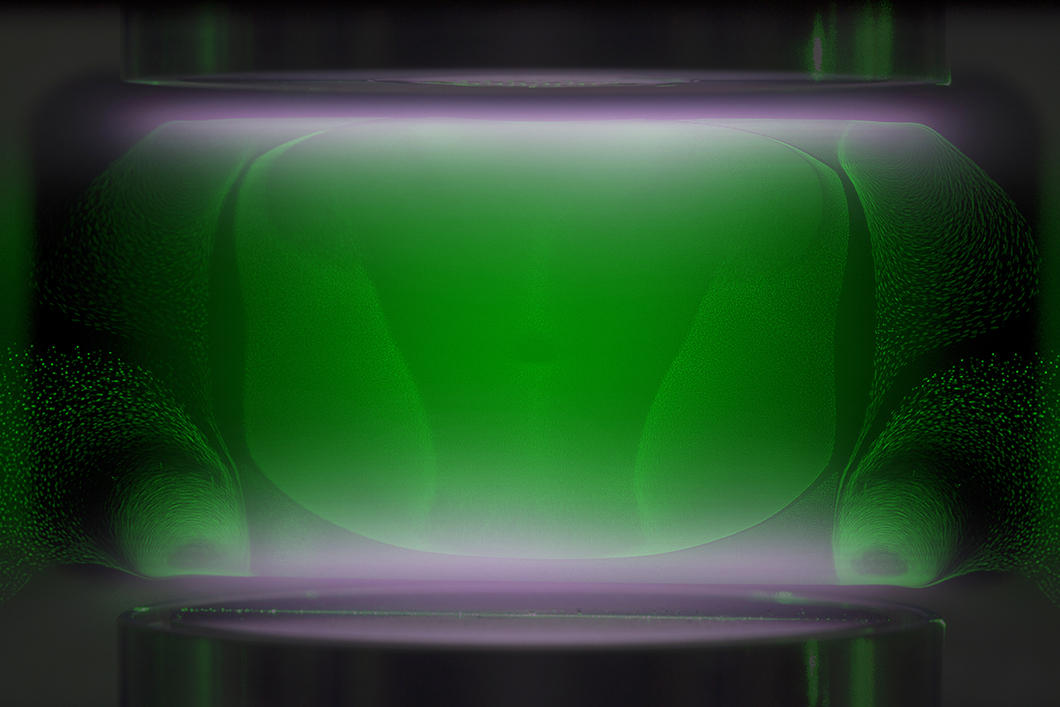
7
Slideshow mode
The areas coloured in green represent the carbon dust created by argon plasma, which is represented in light purple. When exposed to an electric field, plasma ions collide against two disks covered in carbon, ejecting atoms that interact and agglomerate to form increasingly large molecules, and eventually dust. Subjected to various forces, this dust remains in suspension, leading matter in a surprising dance. Understanding the mechanisms behind the formation of this dust is fundamental for experiments conducted in a highly controlled environment, as the least grain of matter can prove to be decisive.
Fadi Zoubian, Erik von Wahl, Thomas Lecas, Maxime Mikikian, GREMI (CNRS / Université d’Orléans), 2019
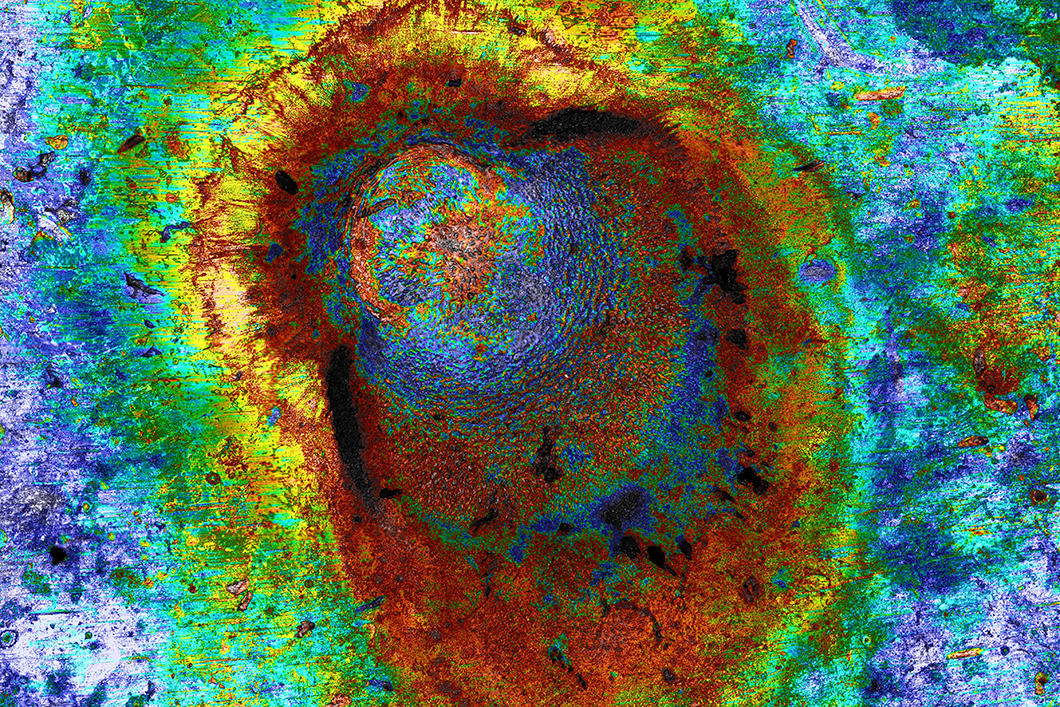
8
Slideshow mode
Behind the splotches of copper is a little bit of iron: we are looking at the surface of a 2-cent coin. Its elemental composition, analysed thanks to fifty shots of LIBS, reveals itself layer by layer, giving this illusion of a metallic crater. The dimensions, depth, and shape of the resulting crater enable researchers to characterize the precision and microdestructive character of a portable LIBS device. This instrument is especially used to analyse the chemical composition of the concretions that form on cave walls, which can be covered with wall paintings.
Alain Queffelec, Léna Bassel / PACEA (CNRS / Université de Bordeaux / Ministère de la culture), 2016
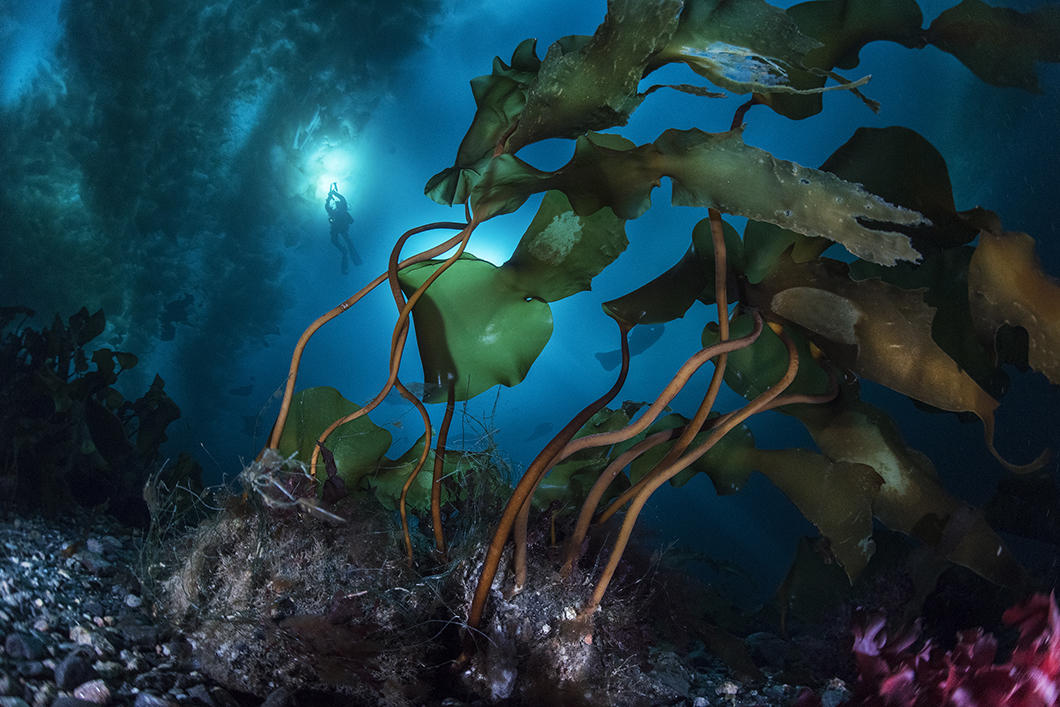
9
Slideshow mode
The late breakup of the ice pack did not make these researchers’ assignment any easier. They are gathering samples of bivalves or lamellibranchs at the bottom of a fjord in eastern Greenland, beneath a metre and a half of snow and a two-metre crust of ice. The retarded development and growth irregularities of these small bivalve molluscs reflect the climactic disturbances that are disrupting arctic ecosystems. In the foreground, large algae have survived despite the little sunlight that penetrates the fjord.
Erwan Amice / LEMAR (Ifremer / IRD / CNRS / Université de Bretagne occidentale), 2018
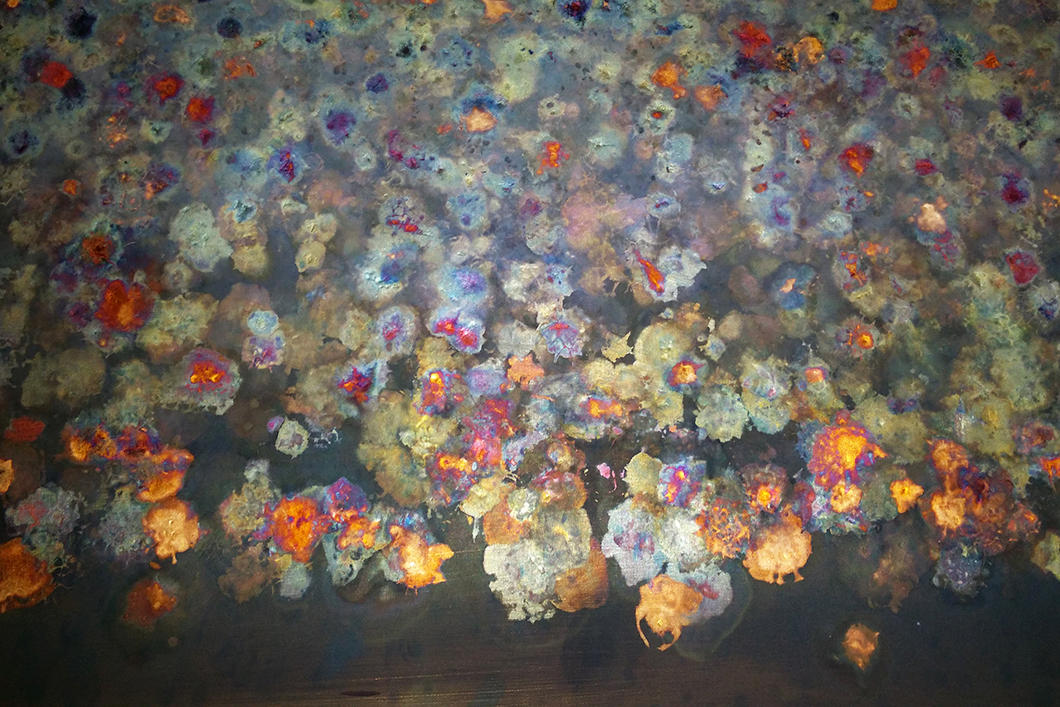
10
Slideshow mode
We are inside the accelerating cavity of a cyclotron, a circular particle accelerator. After multiple years of operation, very high voltage electrical arcs measuring up to 100,000 volts and lasting a few microseconds have literally pulverised the copper in the cavity. These dazzling marks reflect the roughness of its walls, as well as non-uniform metallic deposits.
Christophe Barué / CNRS, 2015
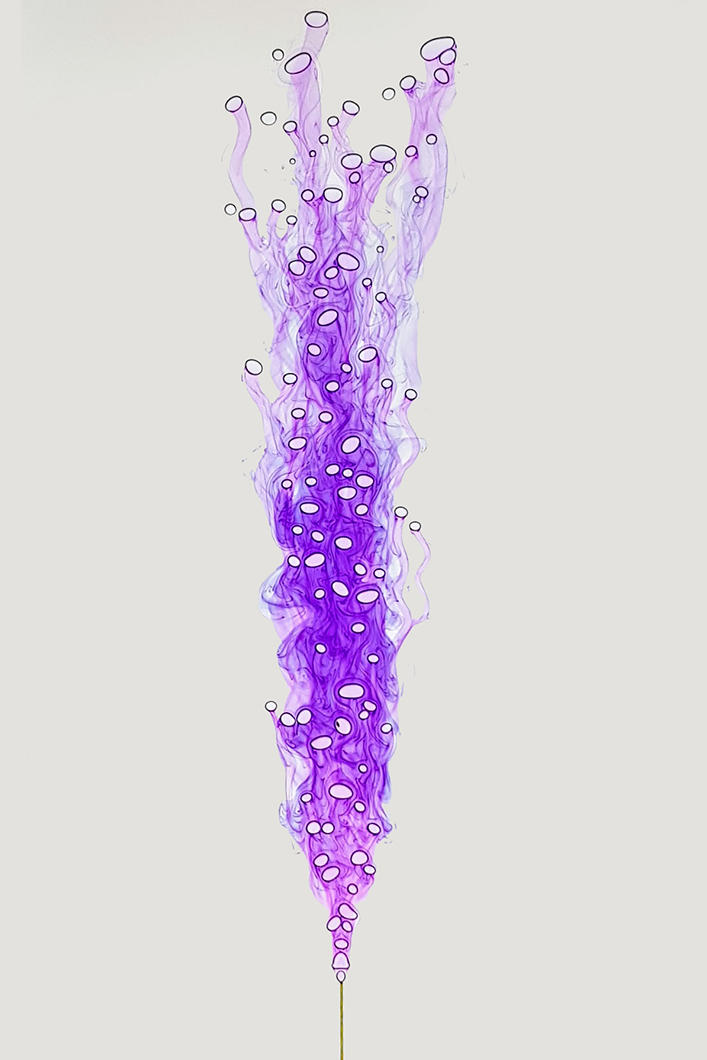
11
Slideshow mode
When oxygen bubbles rise within a liquid initially deprived of oxygen, they leave traces in their wake. Here these bubbles have formed in a liquid at rest confined within a thin crack between two glass plates. The oxygen that escaped from the bubbles reacted with colourless dihydroresorufin—a molecule contained in the liquid—to form a pink-coloured resorufin. These coloured traces therefore correspond to areas in which oxygen was present. This type of photograph, taken at random during an experiment, helps researchers establish a method for precisely measuring the oxygen concentrations that dissolve around a bubble during its trajectory through the liquid phase.
Francisco Felis / FERMasT (CNRS / LGC / TBI / IMFT) / RWTH Aachen, 2018
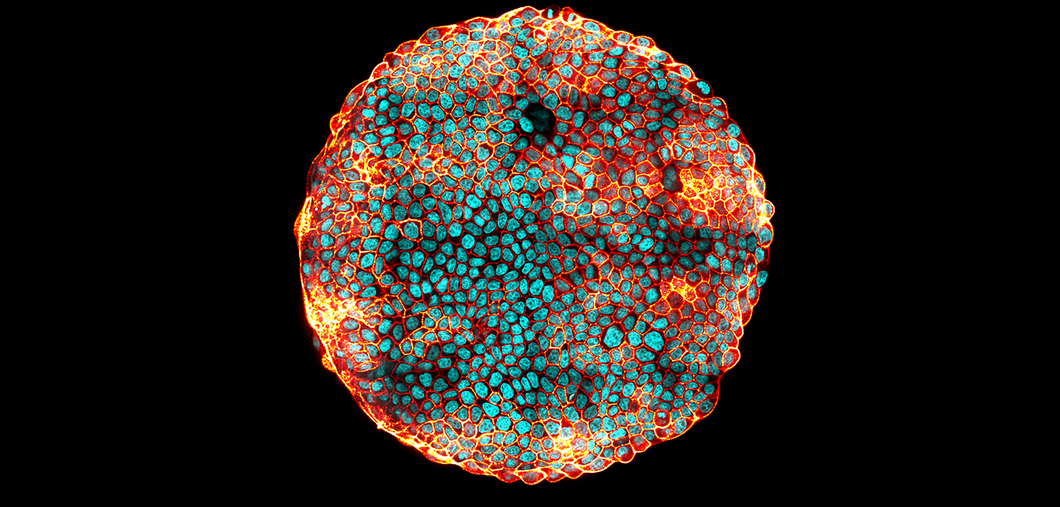
12
Slideshow mode
Pictured here is a colony of kidney cells, confined within a perfectly defined surface. The cell nucleus appears in light blue, and the cell perimeter in yellow-orange. Like the bubbles that form in soapsuds, these epithelial cells have the distinctive feature of being solidly assembled to another, forming a protective barrier between the interior and exterior of an organ, in our bodies for instance. Pursuing this soapsud analogy, researchers are trying to discover the physical forces that give them this highly particular form and organization.
Nicolas Harmand, David Pereira, Sylvie Hénon, Laboratoire Matière et Systèmes complexes (CNRS / Université Paris Diderot), 2017
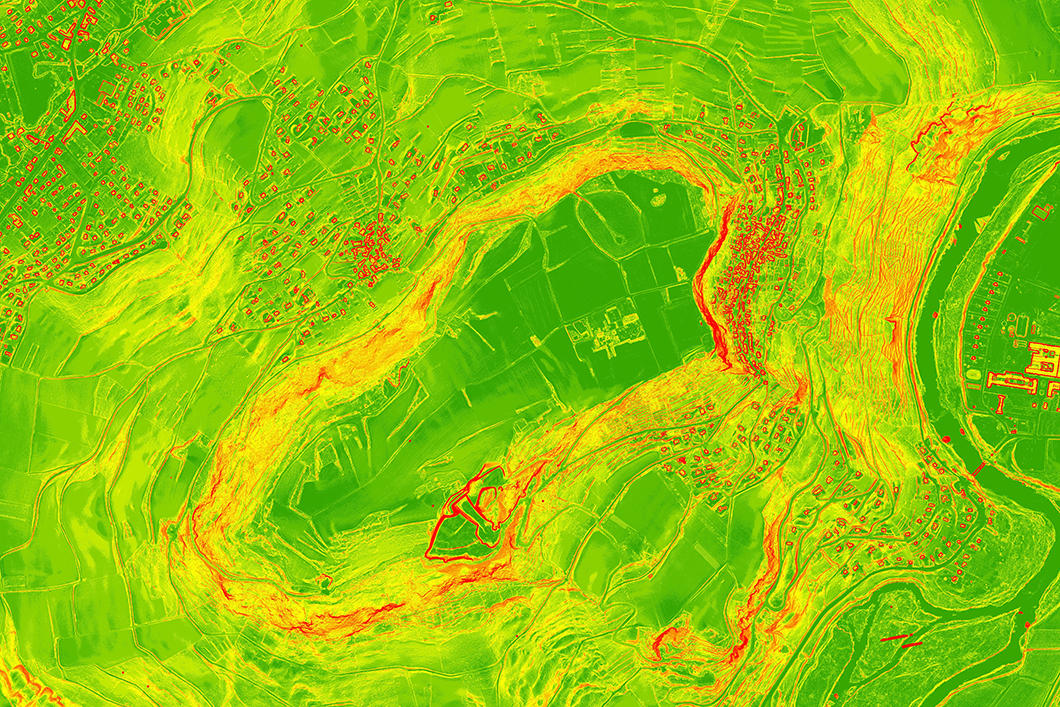
13
Slideshow mode
If you fly over the Oppidum de Corent today, in the Puy-de-Dôme department of France, this is not quite what you would see, for this is actually a digitally reconstructed environment of a Gallic urban area. Thanks to a new technique that is currently being optimized, researchers can now eliminate vegetation as well as level natural relief, thereby revealing these remains, some of which date back to the Gallic period: red represents raised elements such as structures and terraces, while green represents recessed areas. Just what’s needed to better guide future archaeological excavations.
Jean-Pierre Toumazet / GEOLAB (Université Clermont Auvergne / Université de Limoges / CNRS), 2017
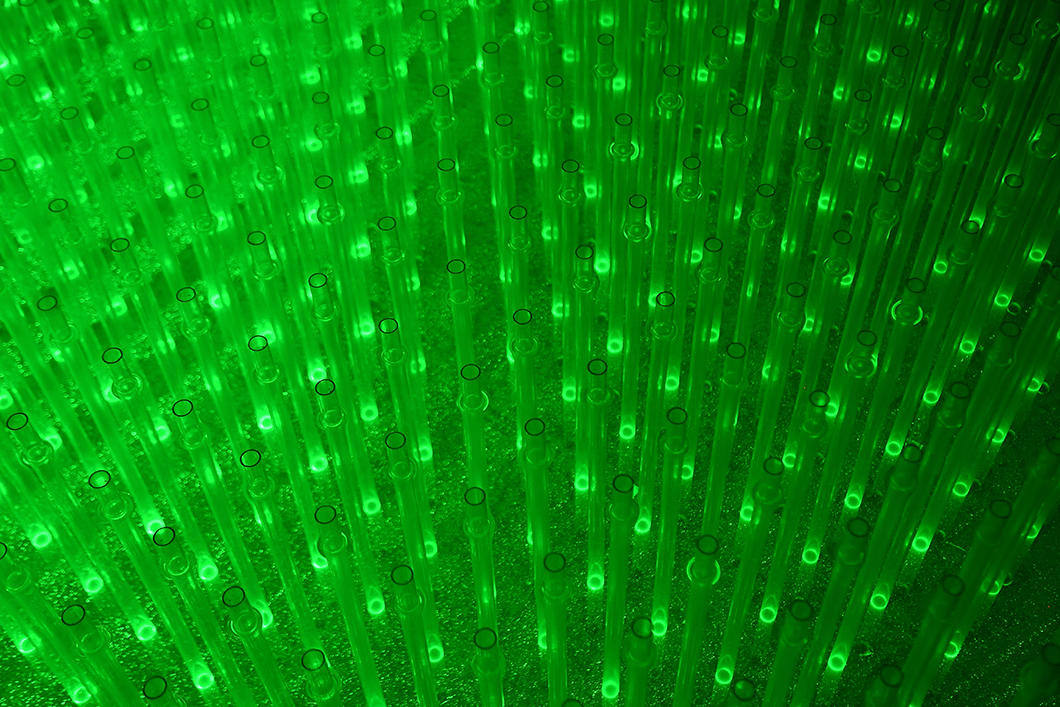
14
Slideshow mode
This teeming forest of tubes, illuminated by a green horizontal laser sheet and immersed in a hydraulic pool, simulates the effect of dense vegetation on sea currents. We are looking at the Coriolis platform, a unique “merry-go-round” that can recreate the physical conditions of the Earth’s rotation. Here researchers are trying to reproduce the trajectory and structure of river outflow and discharge into the ocean. Such discharge, which brings with it turbulence, pollutants, and sediments that are difficult to describe, has a major impact on aquatic ecosystems under stress from climate change.
Samuel Viboud / LEGI (Grenoble INP / CNRS / Université Grenoble Alpes), 2018
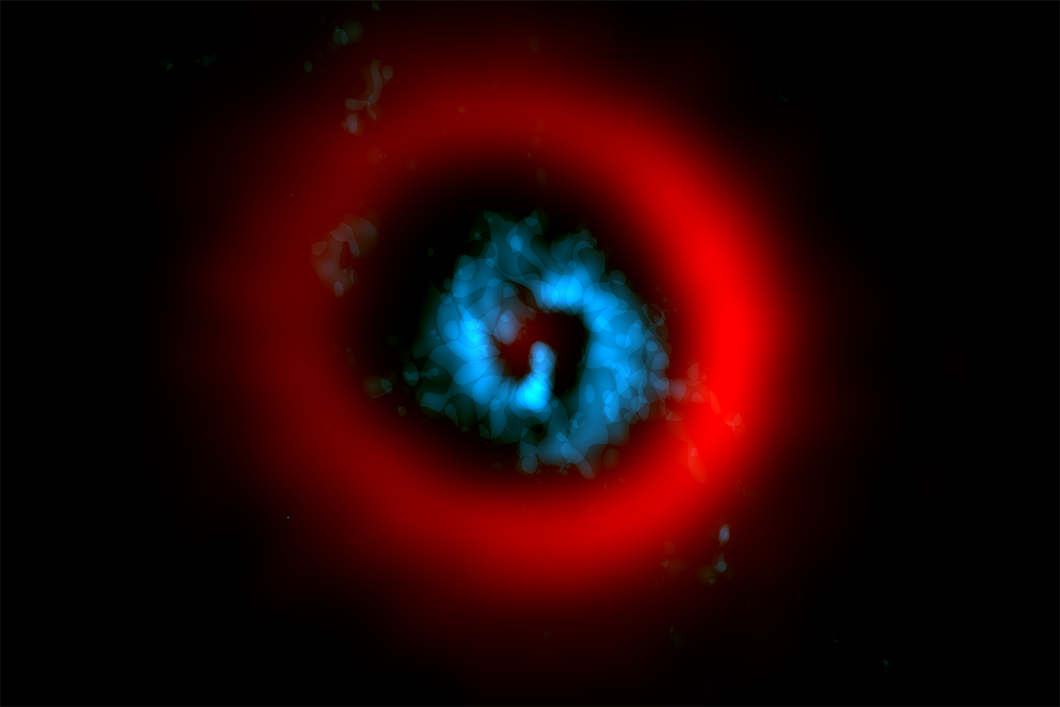
15
Slideshow mode
Twice the size of our Sun, the young star AB Aurigae is only 3 million years old. Here it is caught 450 light years from Earth, in the process of forming a procession of planets: blue represents traces of carbon monoxide, and red represents grains of dust. There is quite a lot of commotion going on, as this dust ring stretches twice the distance between the Sun and Neptune. The gas cloud is sculpted in a spiral by the gravitational interaction of the planets orbiting the sun, which are not bright enough to be detected.
Ya-Wen Tang / ALMA (ESO / NAOJ / NRAO), 2015
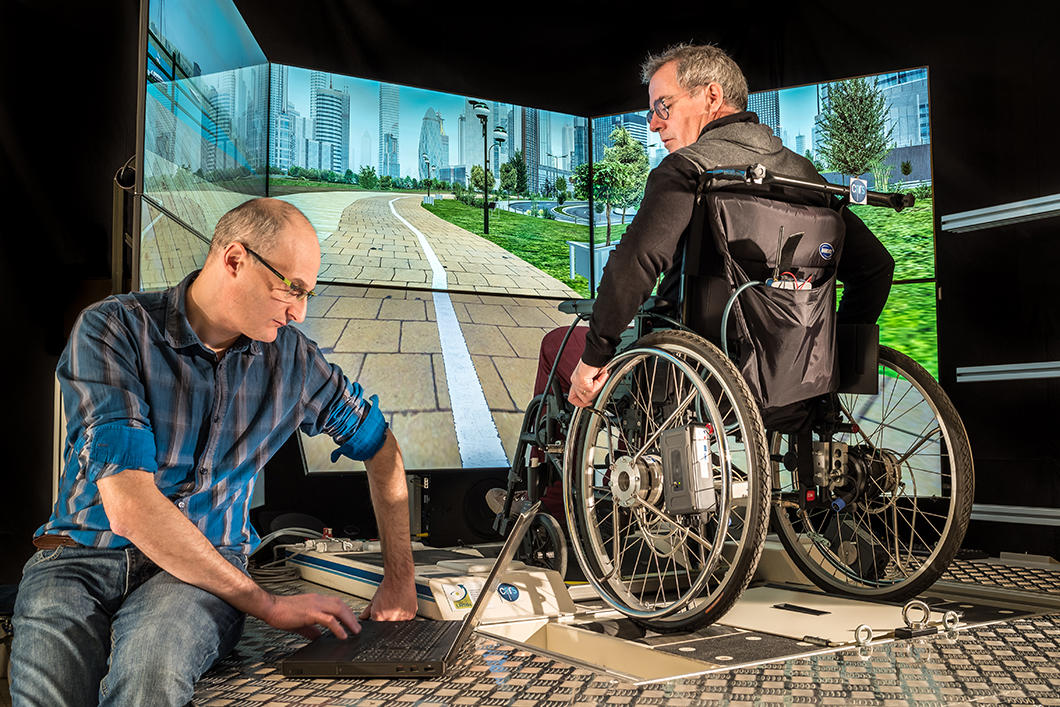
16
Slideshow mode
Urban infrastructure is often poorly adapted to people with disabilities. This platform uses visual, sound, and dynamic simulation to reproduce a realistic environment in which people in wheelchairs can move about. It helps analyse constraints to their movement and examines solutions for improving their mobility, thereby making the city more accessible. Here a person in a wheelchair is testing mobility aids in a virtual environment. The objective is to better understand, design, and conceive the city of the future for everyone.
Serge Debernard / LAMIH (Université Polytechnique Hauts-De- France / CNRS), 2018
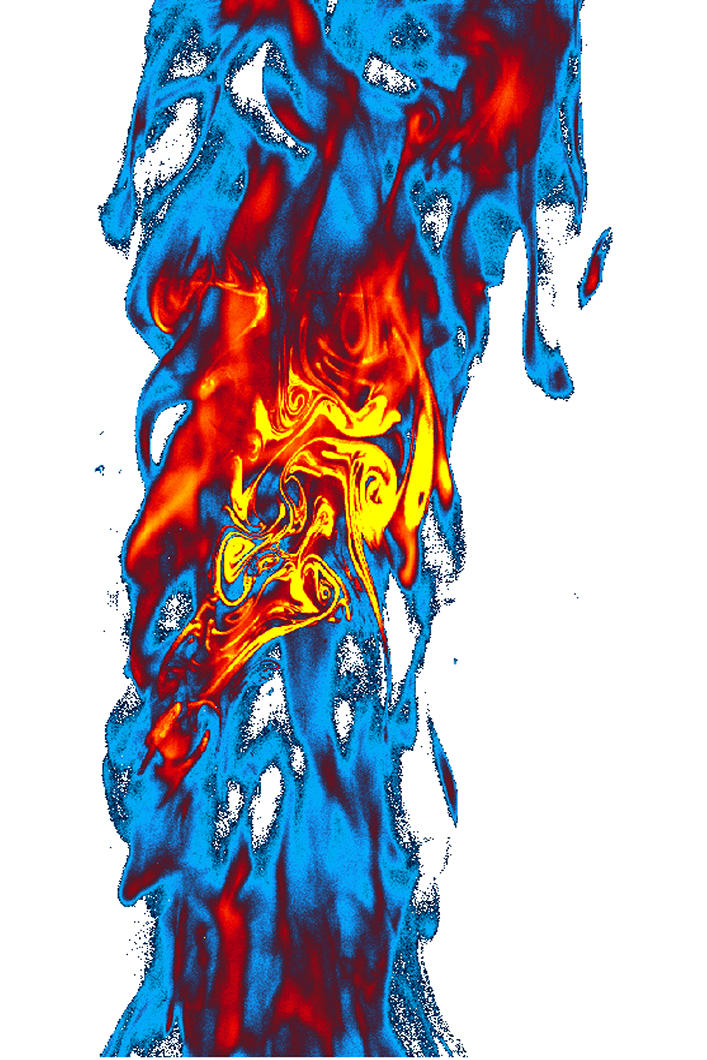
17
Slideshow mode
When the combustion of a hydrocarbon jet is incomplete, carbon atoms can agglomerate and form particles of solid soot, with harmful effects for health and the environment. In this image, the flame is represented in blue and red, and the soot particles in yellow. Illuminating the flame with high-speed laser mapping—10,000 images per second—provides a detailed visualization of the dancing particles: here they are coming together and concentrating in the form of ligaments—on the order of the centimetre—which coil onto themselves when exposed to the eddies from the flame’s turbulent flow. The researchers’ goal is to better understand the mechanisms that cause soot formation, and to control their combustion process in order to eventually reduce their level of emission.
Franzelli Benedetta, Philippe Scouflaire, Sébastien Candel/EM2C/CNRS/Centrale Supelec, 2017
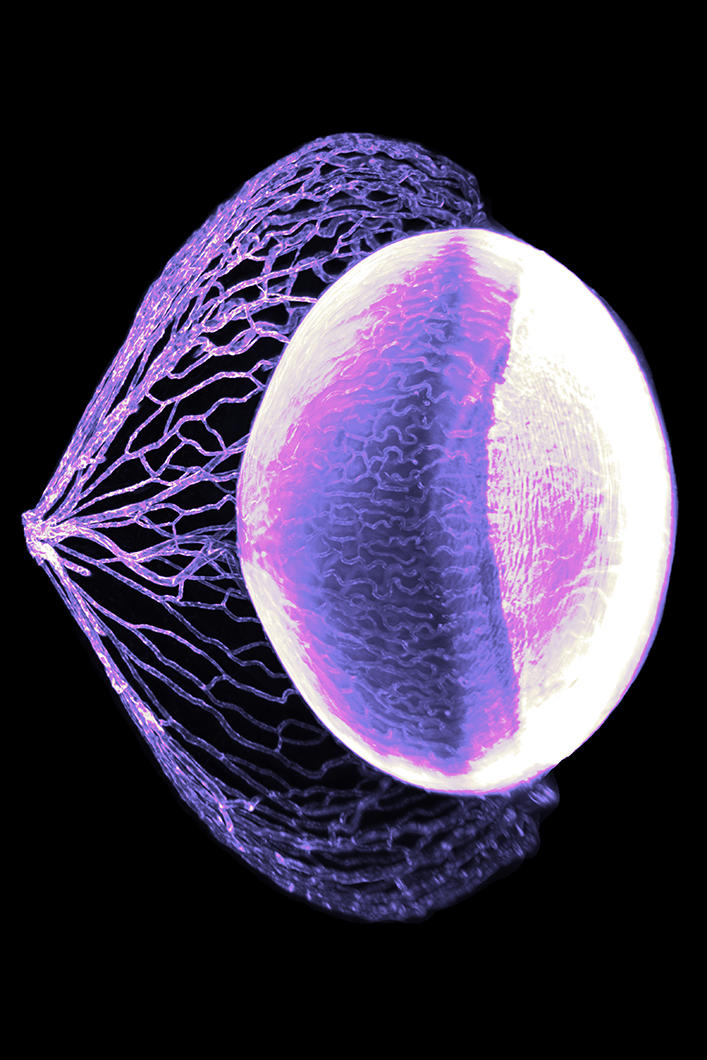
18
Slideshow mode
Pictured is one of the very first images of an eye and its blood vessels in their natural organization. This feat was made possible thanks to a new application of the imaging technique known as clearing. A series of organic solvents was used to make the eye transparent. In this picture, all that is visible are the blood vessels, marked by immunofluorescence and appearing in purple, and the lens, appearing in white. These small purple vessels, called “hyaloid canals,” have the distinctive feature of appearing and then regressing during the embryonic development of the eye, in accordance with a well-defined dynamic. Disruptions can occur, leading to more or less serious vision problems, including complete blindness. As a result, studying this temporary ocular vascularization in 3D is essential to understanding the mechanisms that lead to complex eye diseases.
Michel Paques, CIC des 15-20, Institut de la vision (CNRS/Sorbonne Université/Inserm), Ilaria Cascone, Alain Chédotal et Morgane Belle, Institut de la Vision (CNRS/Sorbonne Université/Inserm)
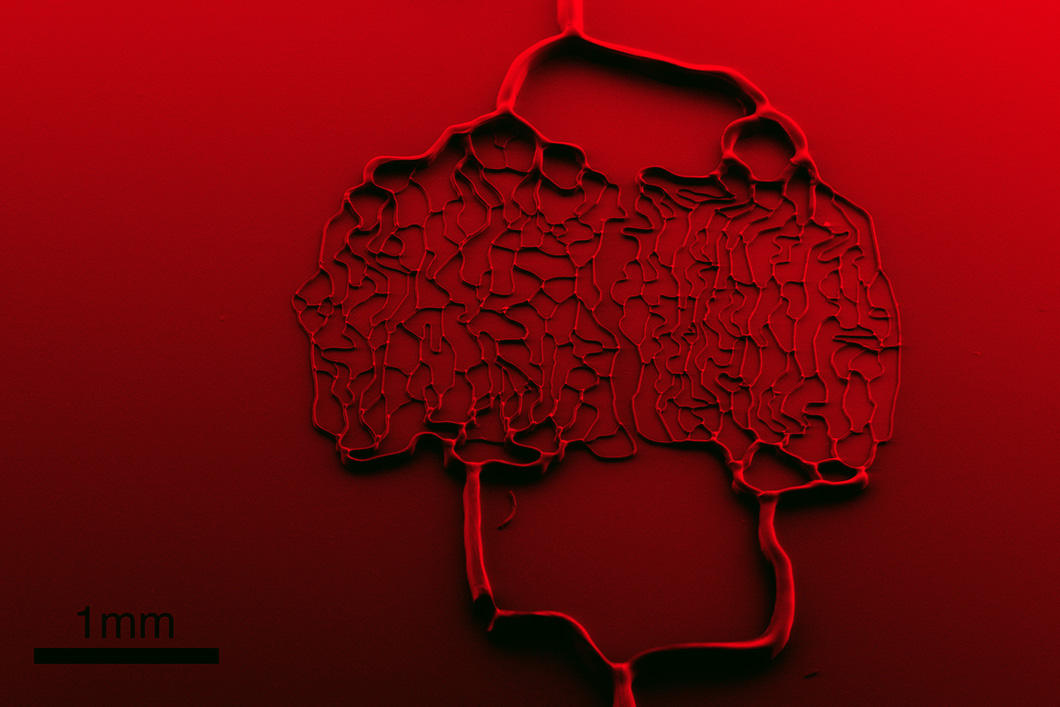
19
Slideshow mode
How does blood circulate in our veins? What forces enable the heart to “pump” so easily? This resin imprint, designed to produce a microfluidic circuit, intricately replicates the geometry of the human body’s vascular networks. This artificial model of microcirculation, seen here in two dimensions, facilitates microscopic observation of the red blood cells as they travel through the arterioles, capillaries, and venules. The researchers’ objective is to study blood flow from a physical point of view, and to ultimately grasp the possible links between this microcirculation and the tissue necrosis that occurs during a cerebrovascular accident.
Benoit Charlot, IES (CNRS/Université de Montpellier), 2018
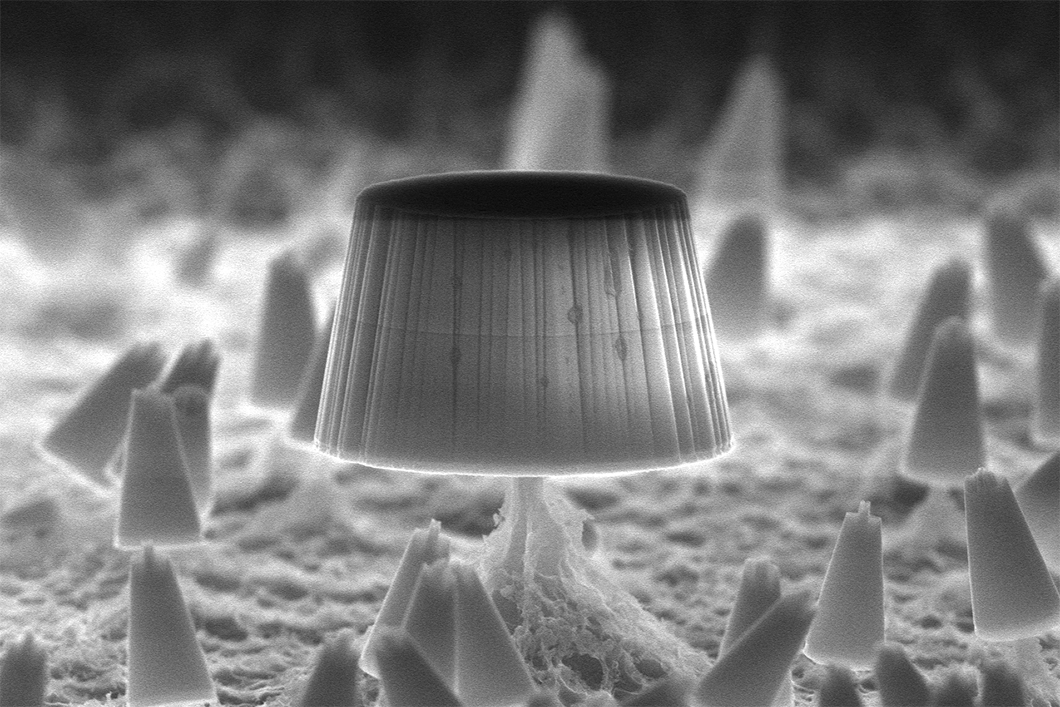
20
Slideshow mode
We are now in the world of nanophotonics, amid the interactions of light and matter on a nanometric scale. In the centre of the image is a microdisk and its cap of III-nitride elements, placed on a silicon chip—the standard semiconductor in electronics. This microdisk can emit light in both the visible spectrum and ultraviolet. On this scale, the properties of these materials that emit in blue light are remarkable, for they can produce the very intense brightness used in highly luminous projectors, such as car headlights.
Farsane Tabataba-Vakili, C2N (CNRS/Université Paris-Sud)
Explore more
Life
Article
01/22/2025
Article
12/11/2024
Article
12/02/2024
Article
10/30/2024
Article
10/15/2024
Photography
Slideshow
01/18/2024
Slideshow
11/10/2022
Slideshow
10/18/2021
Article
08/23/2018
Acfas
Slideshow
01/18/2024
Slideshow
11/10/2022
Slideshow
01/18/2017







